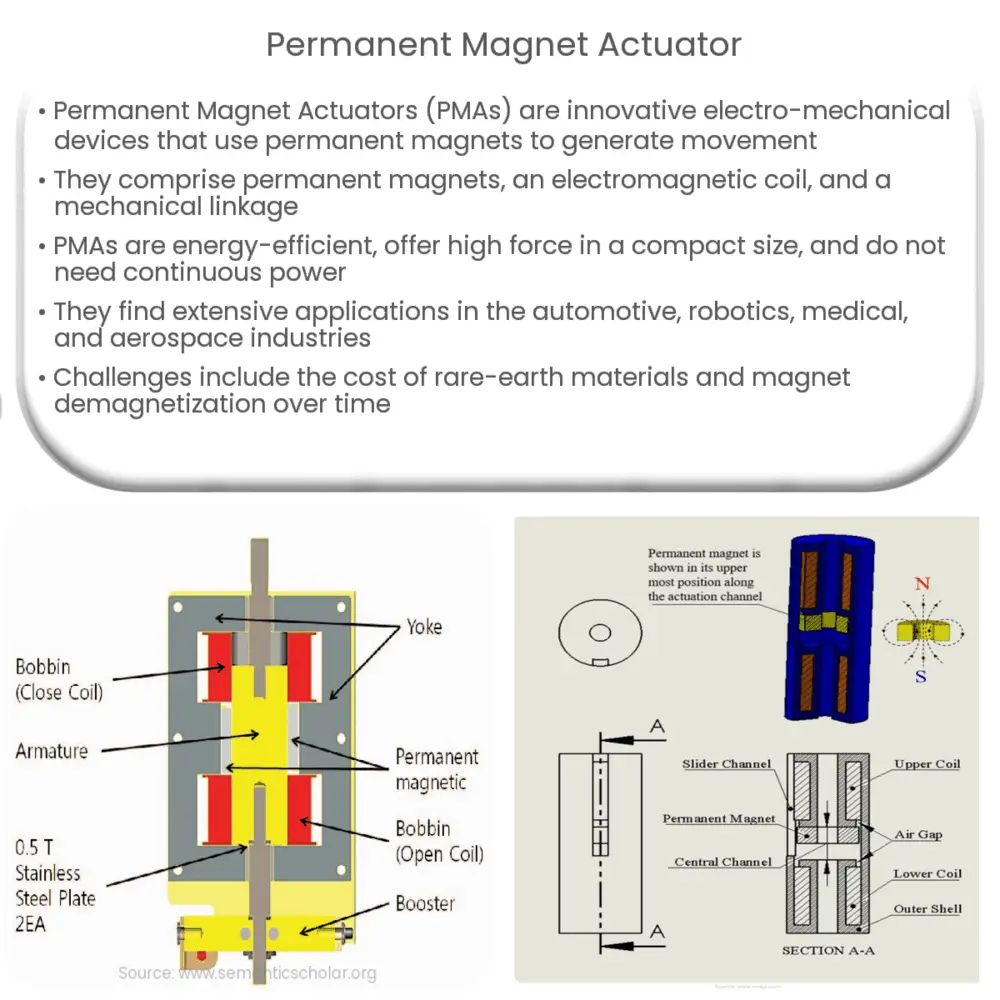Explore the functionality, benefits, applications, and future prospects of Permanent Magnet Actuators in various industries.

Introduction to Permanent Magnet Actuator
The world of engineering and technology is constantly evolving, introducing new concepts and devices designed to improve efficiency and reliability. One such innovative device is the Permanent Magnet Actuator (PMA), a mechanism that is increasingly used in various industries due to its unique characteristics and benefits.
What is a Permanent Magnet Actuator?
A permanent magnet actuator is an electro-mechanical device that uses permanent magnets to generate a magnetic field. This field interacts with the magnetic field generated by an electric coil within the actuator, causing it to move. The movement of the actuator can then be used to perform work, such as opening or closing a switch.
Components of a Permanent Magnet Actuator
The main components of a PMA include the permanent magnets, an electromagnetic coil, and mechanical linkage. The permanent magnets are responsible for creating a steady magnetic field. The electromagnetic coil, when energized, creates a magnetic field that interacts with the permanent magnet’s field. The mechanical linkage is the component that moves as a result of this interaction, allowing the actuator to perform its intended function.
Working Principle of a Permanent Magnet Actuator
- When the coil is energized, it generates a magnetic field.
- This field interacts with the magnetic field of the permanent magnets.
- The resulting magnetic force causes the mechanical linkage to move.
- The movement of the mechanical linkage can then be used to perform work, such as switching a circuit on or off.
Advantages of Permanent Magnet Actuators
PMAs have several distinct advantages over traditional electromagnetic actuators. First, they are highly efficient as they require less electrical energy to generate a given amount of force. This is because the magnetic field from the permanent magnets reduces the amount of current required to operate the actuator.
Second, PMAs are capable of providing a high force output in a compact size. This makes them ideal for applications where space is at a premium. Lastly, because they use permanent magnets, PMAs do not require continuous power to maintain their position, making them a more energy-efficient choice in many applications.
Applications of Permanent Magnet Actuators
Due to their efficiency and compact size, PMAs find extensive applications in a range of industries. Here are some prominent examples:
- Automotive Industry: PMAs are used in electric vehicles for their compact size and high efficiency. They are found in electric power steering systems, braking systems, and even in door locking mechanisms.
- Robotics: The high force-to-weight ratio of PMAs makes them ideal for use in robotics. They are used in robotic arms and other movable components where precision and efficiency are paramount.
- Medical Devices: PMAs are used in medical devices such as MRI machines, where their ability to provide a stable magnetic field without continuous power is beneficial.
- Aerospace: In the aerospace industry, the lightweight and reliable operation of PMAs are used in various mechanisms in aircraft and spacecraft.
Challenges and Future of Permanent Magnet Actuators
Despite their many benefits, PMAs also face some challenges. The main issue is the cost and availability of rare-earth materials used in the manufacture of high-performance permanent magnets. Furthermore, the demagnetization of the permanent magnet over time is another concern, although advances in magnet technology are helping to mitigate this issue.
Looking ahead, the future of PMAs appears promising. As technology progresses and the demand for more energy-efficient devices increases, PMAs are likely to become more widespread. Innovations in magnet technology and actuator design may also help to reduce costs and improve the performance of these devices.
Conclusion
In conclusion, permanent magnet actuators represent a significant advancement in the field of electromechanical devices. Their high efficiency, compact size, and ability to provide high force output make them an ideal choice for a wide range of applications. While there are challenges to be overcome, particularly in the area of cost and availability of materials, the future of PMAs is full of potential. As we continue to innovate and push the boundaries of technology, it’s clear that PMAs will play an integral role in many industries.

